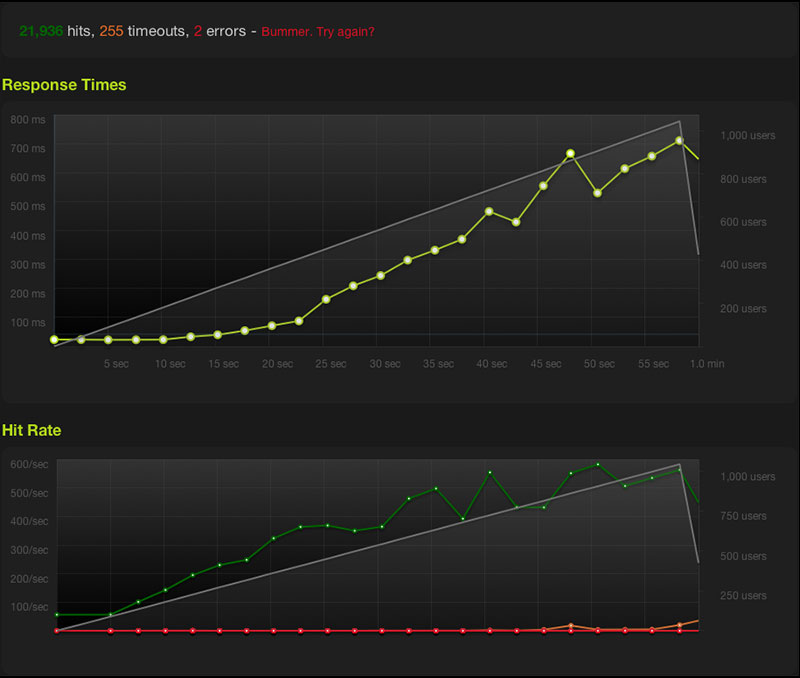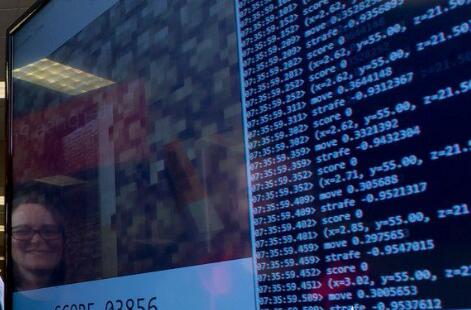Pandas可以处理任何领域的时序数据(time series),使用Numpy的datetime64 和timedelta64 类型,Pandas整合了来自其他Python库的大量功能,如Scikits.TimeSeries,并为处理时间序列数据创建了大量新功能。
一、时序的创建
1.四类时间变量
| 名称 | 描述 | 元素类型 | 创建方式 |
| Datetimes(时间点/时刻) | 描述特定日期或时间点 | Timestamp | to_datetime或date_range |
| Timespans(时间段/时期) | 由时间点定义的一段时期 | Period | Period或period_range |
| Dateoffsets(相对时间差) | 一段时间的相对大小 (与夏/冬令时无关) | Dateoffset | DateOffset |
| Timedeltas(绝对时间差) | 一段时间的绝对大小 (与夏/冬令时有关) | Timedelta | to_timedelta或 timedelta_range |
对于时间序列数据,传统的做法是在Series或DataFrame索引中表示时间分量,这样就可以对时间元素执行操作。但是,Series和DataFrame也可以直接支持作为数据本身的时间组件。当传递到这些构造函数时,Series和DataFrame扩展了对日期时间、时间增量和期间数据的数据类型支持和功能。然而,DateOffset数据将作为对象数据存储。
#在index加入时间成分,dtype为int64
pd.Series(range(3), index=pd.date_range('2000', freq='D', periods=3))
#直接定义时间成分,dtype为datetime64[ns]
pd.Series(pd.date_range('2000', freq='D', periods=3))


2.时间点的创建
Timestamped是将值与时间点相关联的最基本的时间序列数据类型。对于pandas objects来说,这意味着使用时间点。
(a)to_datetime方法
Pandas在时间点建立的输入格式规定上给了很大的自由度,下面的语句都能正确建立同一时间点
print(pd.to_datetime('2020.1.1'))
print(pd.to_datetime('2020 1.1'))
print(pd.to_datetime('2020 1 1'))
print(pd.to_datetime('2020 1-1'))
print(pd.to_datetime('2020-1 1'))
print(pd.to_datetime('2020-1-1'))
print(pd.to_datetime('2020/1/1'))
print(pd.to_datetime('1.1.2020'))
print(pd.to_datetime('1.1 2020'))
print(pd.to_datetime('1 1 2020'))
print(pd.to_datetime('1 1-2020'))
print(pd.to_datetime('1-1 2020'))
print(pd.to_datetime('1-1-2020'))
print(pd.to_datetime('1/1/2020'))
print(pd.to_datetime('20200101'))
print(pd.to_datetime('2020.0101'))#pd.to_datetime('2020\\1\\1') #报错
#pd.to_datetime('2020`1`1') #报错
#pd.to_datetime('2020.1 1') #报错
#pd.to_datetime('1 1.2020') #报错
利用format参数强制匹配
print(pd.to_datetime('2020\\1\\1',format='%Y\\%m\\%d'))
print(pd.to_datetime('2020`1`1',format='%Y`%m`%d'))
print(pd.to_datetime('2020.1 1',format='%Y.%m %d'))
print(pd.to_datetime('1 1.2020',format='%d %m.%Y'))
也可使用列表将其转为时间点索引
pd.Series(range(2),index=pd.to_datetime(['2020/1/1','2020/1/2']))
查看类型
type(pd.to_datetime(['2020/1/1','2020/1/2']))

对于DataFrame,如果列已经按照时间顺序排好,则利用to_datetime可自动转换
df = pd.DataFrame({'year': [2020, 2020],'month': [1, 1], 'day': [1, 2]})
pd.to_datetime(df)


(b)时间精度与范围限制
Timestamp的精度远远不止day,可以最小到纳秒ns,同时它的范围为
pd.to_datetime('2020/1/1 00:00:00.123456789')#最小范围
print(pd.Timestamp.min) #output:Timestamp('1677-09-21 00:12:43.145225')
#最大范围
print(pd.Timestamp.min) #output:Timestamp('2262-04-11 23:47:16.854775807')
(c)date_range方法
start/end/periods(时间点个数)/freq(间隔方法)是该方法最重要的参数,给定了其中的3个,剩下的一个就会被却sing
freq参数如下:
| 符号 | D/B | W | M/Q/Y | BM/BQ/BY | MS/QS/YS | BMS/BQS/BYS | H | T | S |
| 描述 | 日/工作日 | 周 | 月末 | 月/季/年末日 | 月/季/年末工作日 | 月/季/年初日 | 时 | 分钟 | 秒 |
3.Dateoffset对象
(a)DateOffset与Timedelta的区别
Timedelta绝对时间差的特点指无论是冬令时还是夏令时,增减1day都只计算24小时
DateOffset相对时间差指,无论一天是23/24/25小时,增减1day都与当天相同的时间保持一致
例如,英国当地时间 2020年03月29日,01:00:00 时钟向前调整 1 小时 变为 2020年03月29日,02:00:00,开始夏令时
ts = pd.Timestamp('2020-3-29 01:00:00', tz='Europe/Helsinki')
ts + pd.Timedelta(days=1)

ts = pd.Timestamp('2020-3-29 01:00:00', tz='Europe/Helsinki')
ts + pd.DateOffset(days=1)

可去除tz属性,就可使两者保持一致。
(b)增减一段时间
pd.Timestamp('2020-01-01') + pd.DateOffset(minutes=20) - pd.DateOffset(weeks=2)
(c)各类常用offset对象
pd.Timestamp('2020-01-01') + pd.offsets.Week(2) #增加两星期
pd.Timestamp('2020-01-01') + pd.offsets.BQuarterBegin(1) #营业季度开始
(d)序列的offset操作
利用apply函数
pd.Series(pd.offsets.BYearBegin(3).apply(i) for i in pd.date_range('20200101',periods=3,freq='Y'))

直接使用对象加减
pd.date_range('20200101',periods=3,freq='Y') + pd.offsets.BYearBegin(3)
定制offset,可以指定weekmask和holidays参数
pd.Series(pd.offsets.CDay(3,weekmask='Wed Fri',holidays='2020010').apply(i)for i in pd.date_range('20200105',periods=3,freq='D'))
二、时序的索引及属性
1.索引切片
rng = pd.date_range('2020','2021', freq='W')
ts = pd.Series(np.random.randn(len(rng)), index=rng)
ts['2020-01-26':'20200726'].head() #日期从01-26,到07-26,字符自己转换成合理的
2.子集索引
#只取7月份数据
ts['2020-7'].head()
#支持混合形态索引
ts['2011-1':'20200726'].head()
3.时间点的属性
采用dt对象可以轻松获得关于时间的信息
#2020年有52个星期
pd.Series(ts.index).dt.week
#每星期是在几号
pd.Series(ts.index).dt.day
利用strftime修改时间格式
pd.Series(ts.index).dt.strftime('%Y-间隔1-%m-间隔2-%d').head()
对于datetime对象可以直接通过属性获取信息
#每个星期所在的月份
pd.date_range('2020','2021', freq='W').month
#每个星期所在的月份
pd.date_range('2020','2021', freq='W').weekday #The number of the day of the week with Monday=0, Sunday=6
三、重采样
重采样,就是指resample函数,它可以看做时序版本的groupby函数
1.resample对象的基本操作
采样频率一般设置为上面提到的offset字符
df_r = pd.DataFrame(np.random.randn(1000, 3),index=pd.date_range('1/1/2020', freq='S', periods=1000),columns=['A', 'B', 'C'])
r = df_r.resample('3min')
r.sum()

2.采样聚合
df_r = pd.DataFrame(np.random.randn(1000, 3),index=pd.date_range('1/1/2020', freq='S', periods=1000),columns=['A', 'B', 'C'])
r = df_r.resample('3T')#只求一个值
r['A'].mean()
#表示多个
r['A'].agg([np.sum, np.mean, np.std])
#使用lambda
r.agg({'A': np.sum,'B': lambda x: max(x)-min(x)})
3.采样组的迭代
采样组的迭代和groupby迭代完全类似,对于每一个组都可以分别做相应操作
small = pd.Series(range(6),index=pd.to_datetime(['2020-01-01 00:00:00', '2020-01-01 00:30:00', '2020-01-01 00:31:00','2020-01-01 01:00:00','2020-01-01 03:00:00','2020-01-01 03:05:00']))
resampled = small.resample('H')
for name, group in resampled:print("Group: ", name)print("-" * 27)print(group, end="\n\n")

四、窗口函数
1.Rolling
(a)常用聚合
s = pd.Series(np.random.randn(1000),index=pd.date_range('1/1/2020', periods=1000))
#
s.rolling(window=50)
#
s.rolling(window=50).mean()
#min_periods是指需要的非缺失数据点数量阈值
s.rolling(window=50,min_periods=3).mean()
此外,还有count/sum/mean/median/min/max/std/var/skew/kurt/quantile/cov/corr都是常用的聚合函数
(b)rolling的apply聚合
使用apply聚合时,只需记住传入的是window大小的Series,输出的必须是标量即可,
#计算变异系数
s.rolling(window=50,min_periods=3).apply(lambda x:x.std()/x.mean()).head()
(c)基于时间的Rolling
可选closed='right'(默认)\'left'\'both'\'neither'参数,决定端点的包含情况
s.rolling('15D').mean().head()
#添加closed
s.rolling('15D', closed='right').sum().head()
2.Expanding
(a)expanding函数
普通的expanding函数等价与rolling(window=len(s),min_periods=1),是对序列的累计计算,apply也适用
#rolling
s.rolling(window=len(s),min_periods=1).sum().head()
#expanding
s.expanding().sum().head()
#apply
s.expanding().apply(lambda x:sum(x)).head()
(b)几个特别的Expanding类型函数
cumsum/cumprod/cummax/cummin都是特殊expanding累计计算方法
shift/diff/pct_change都是涉及到了元素关系
①shift是指序列索引不变,但值向后移动
②diff是指前后元素的差,period参数表示间隔,默认为1,并且可以为负
③pct_change是值前后元素的变化百分比,period参数与diff类似